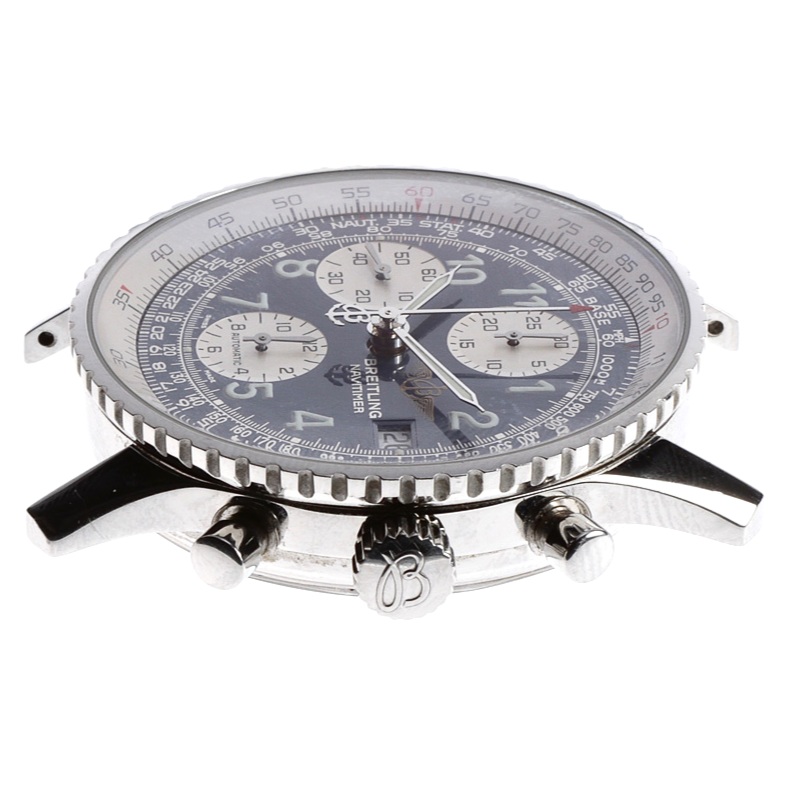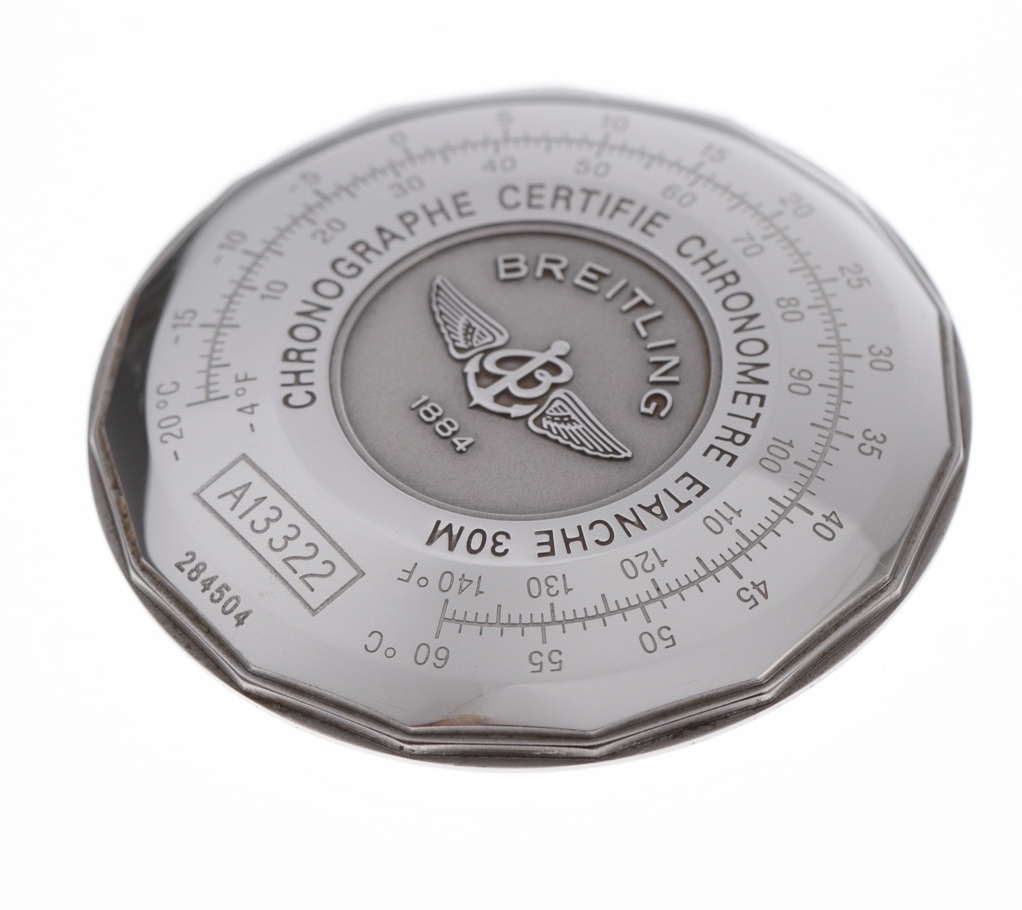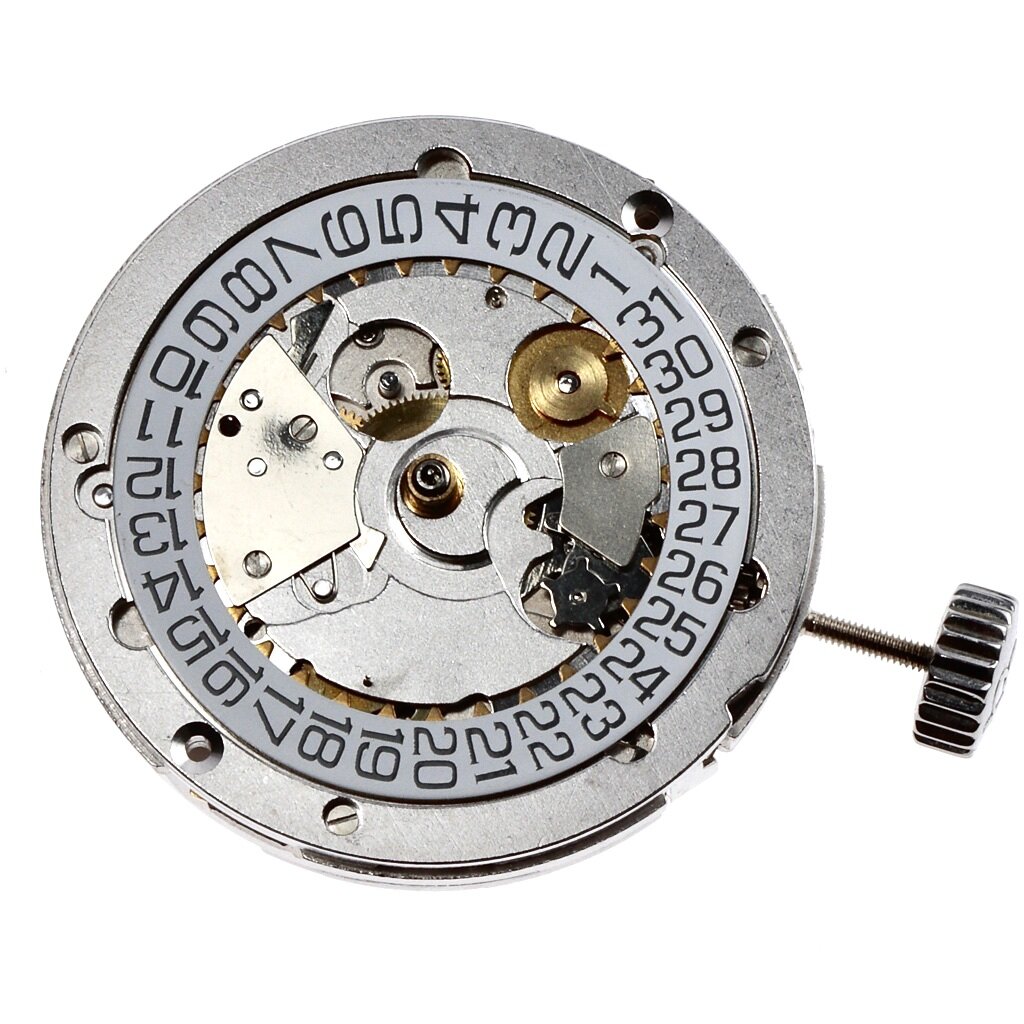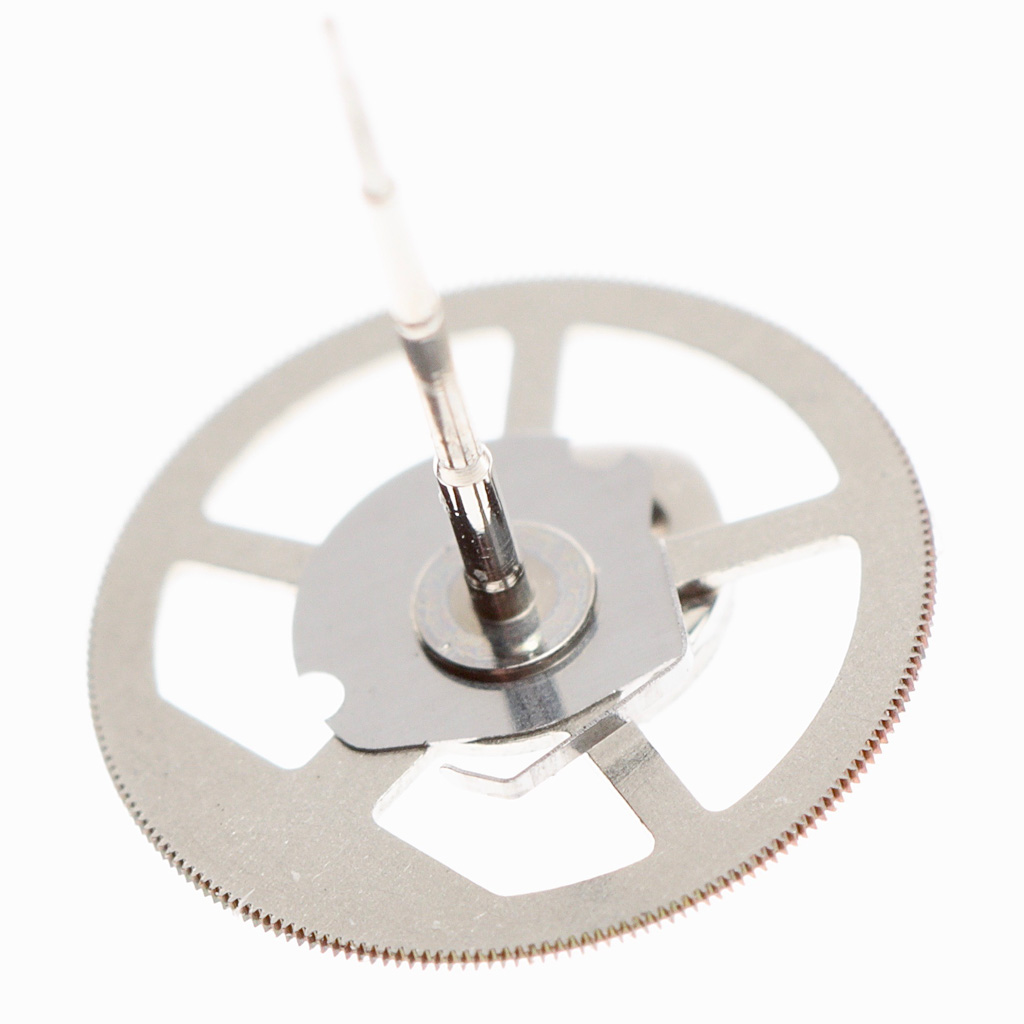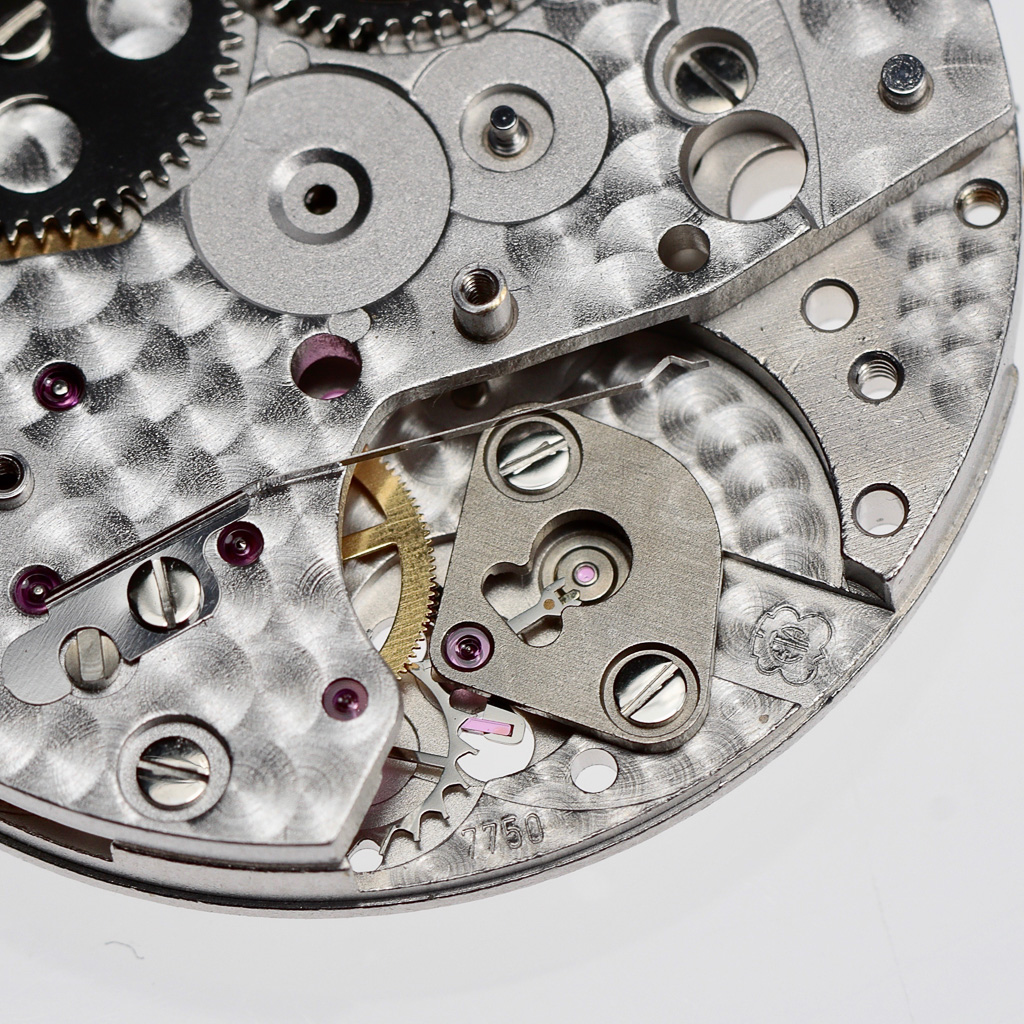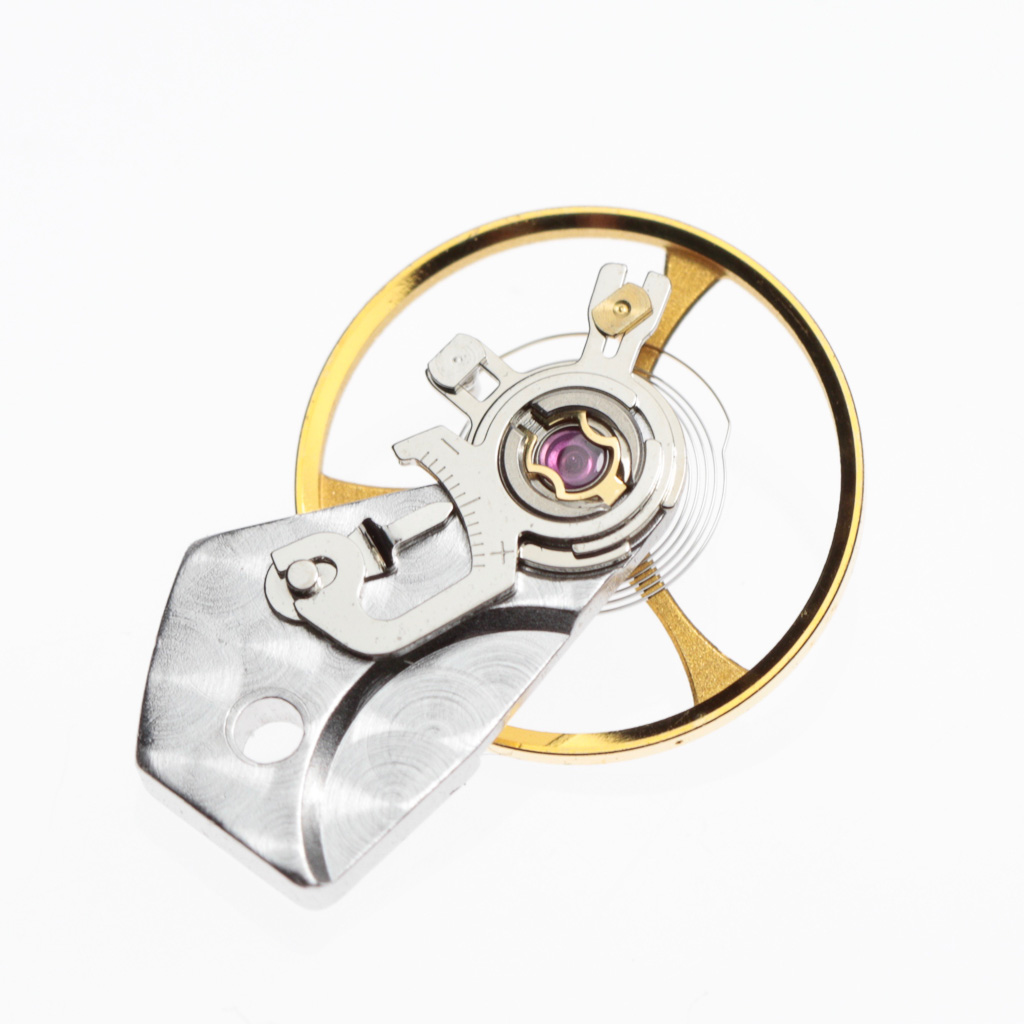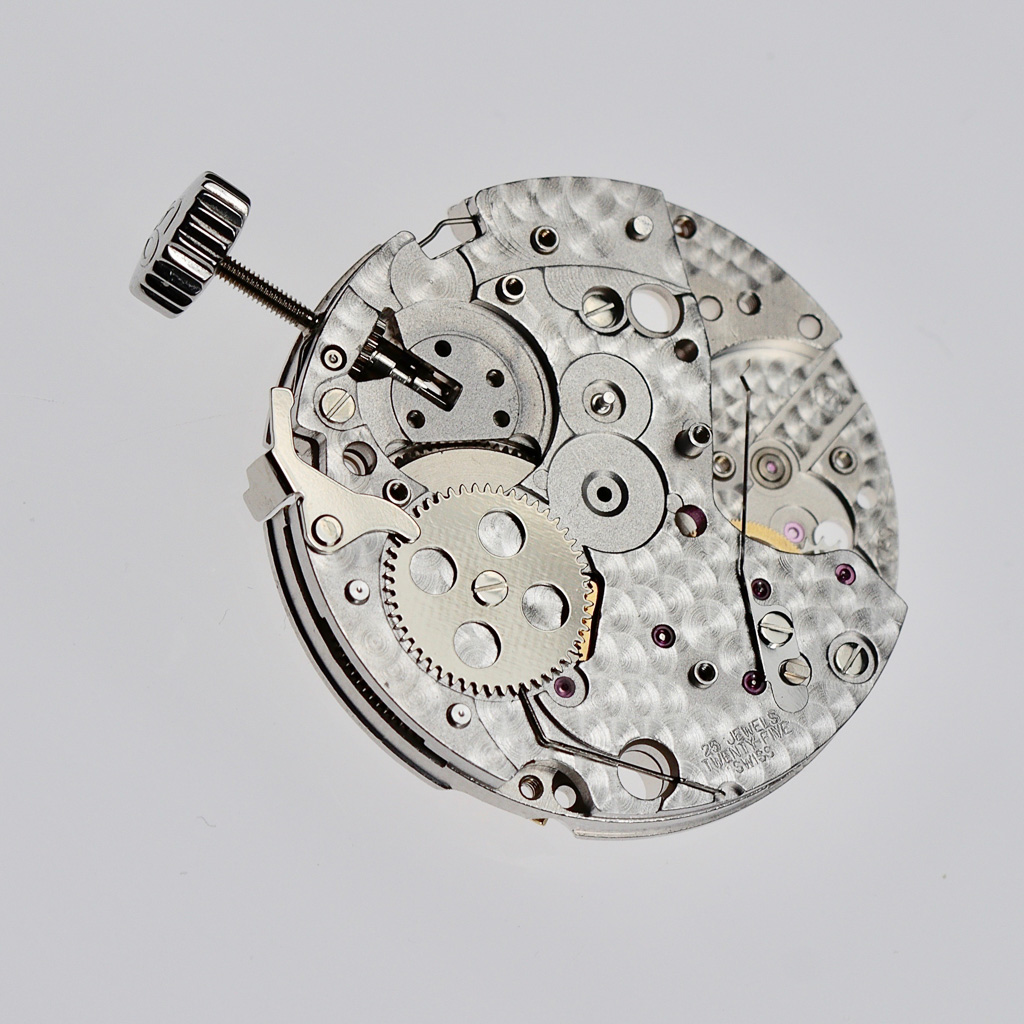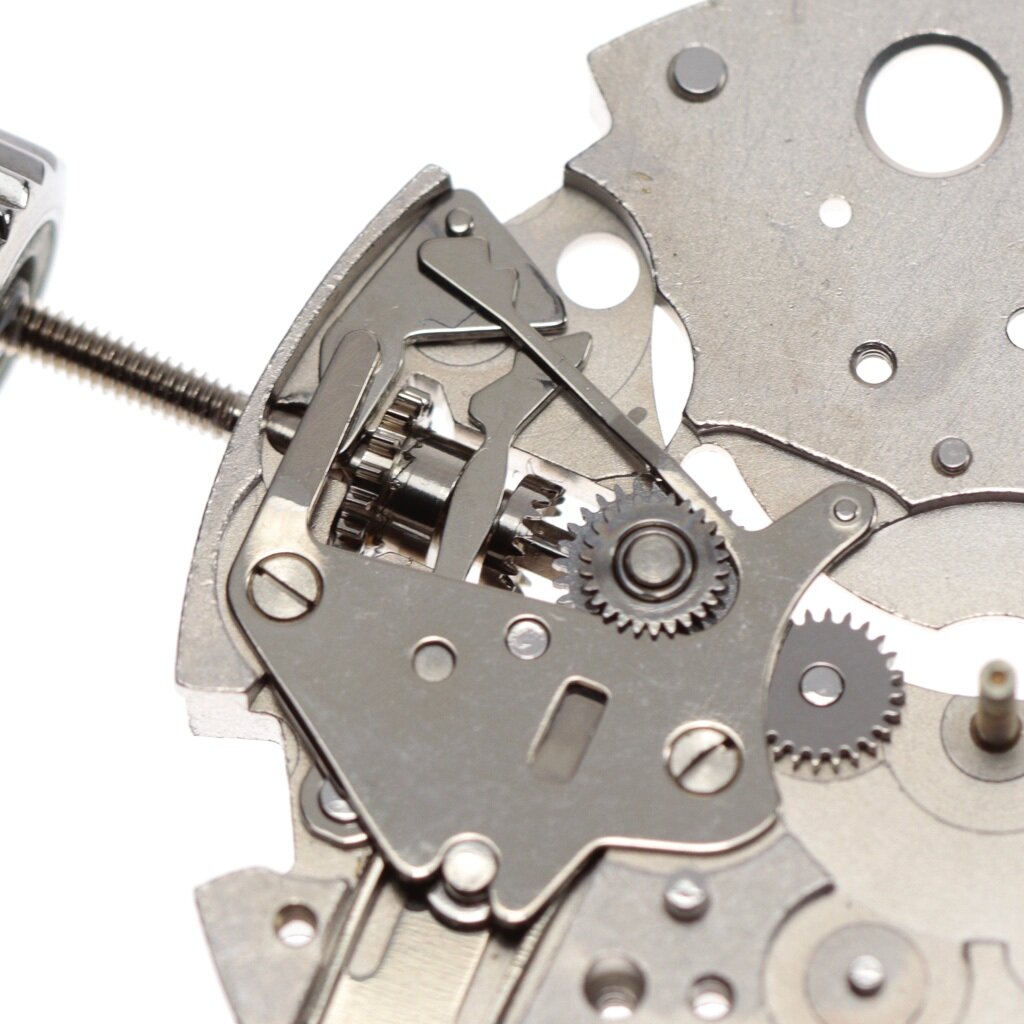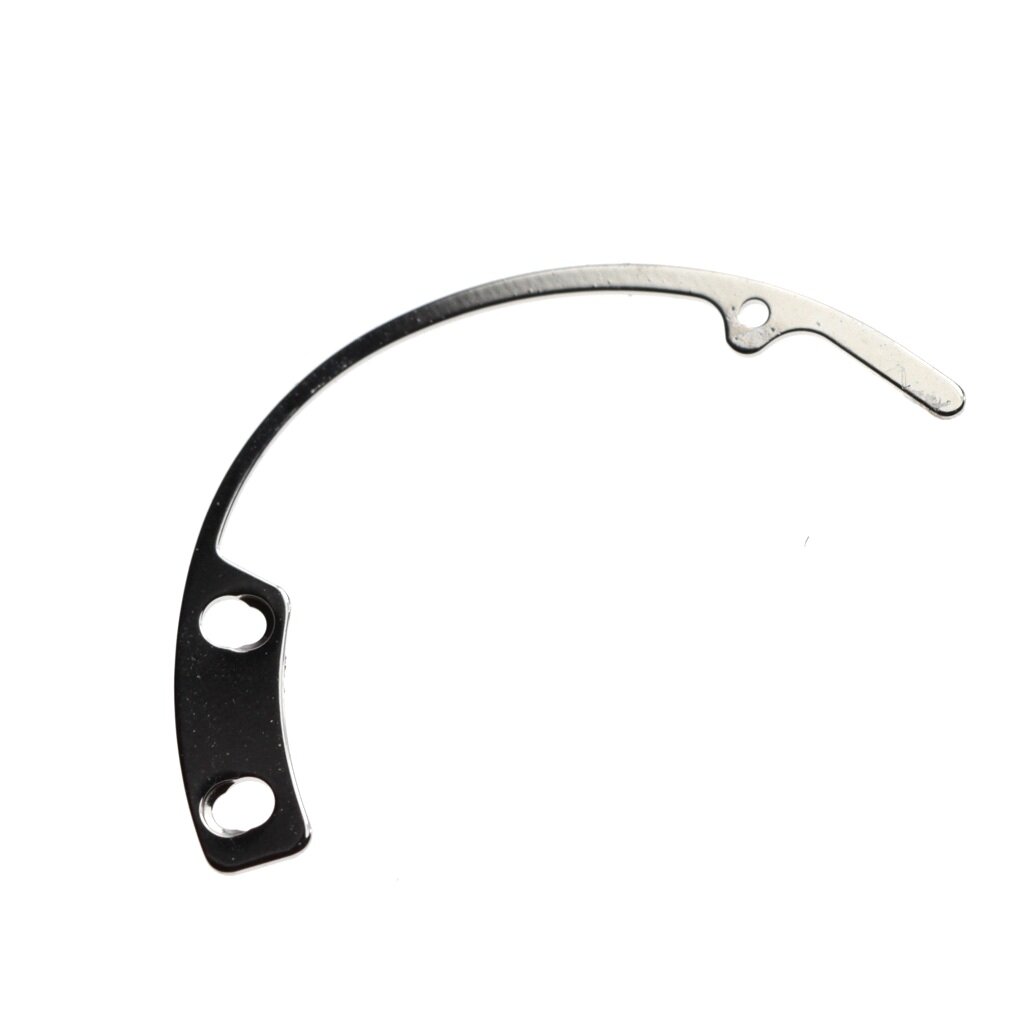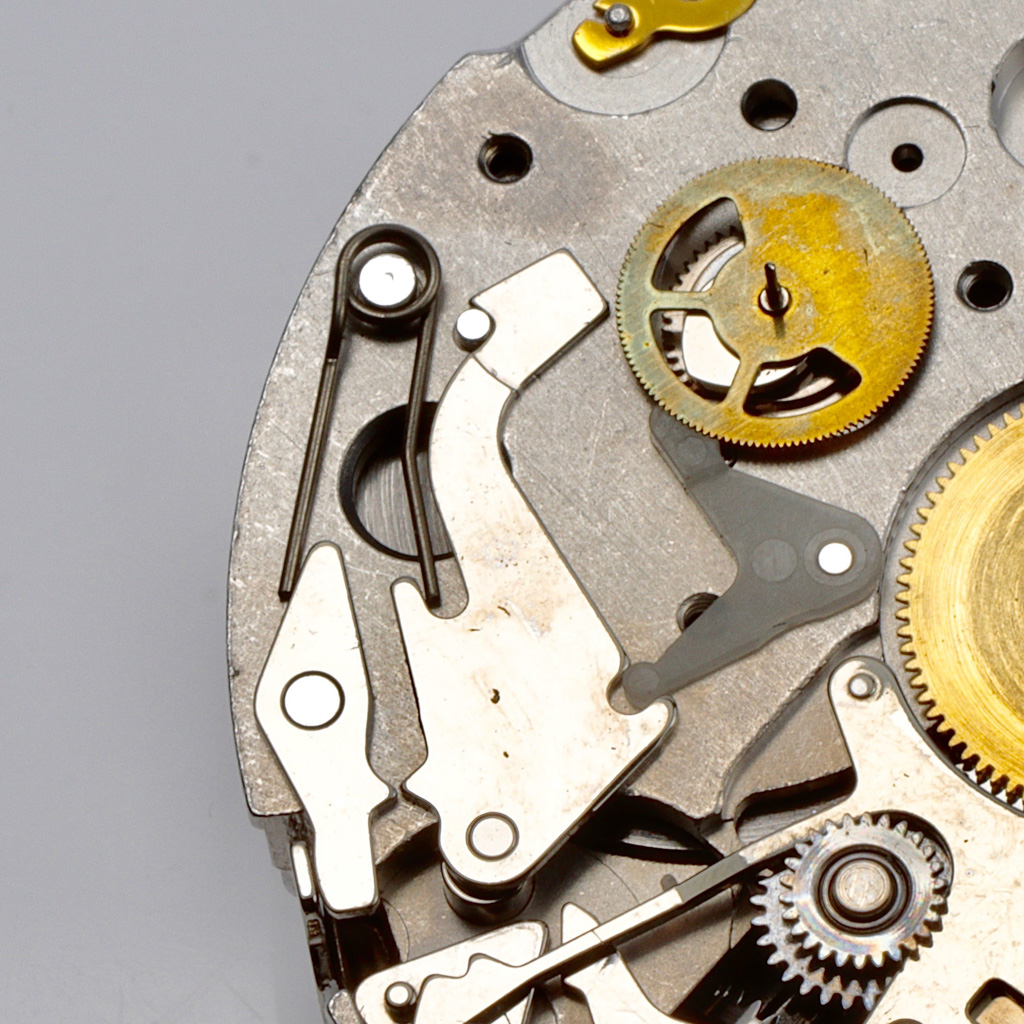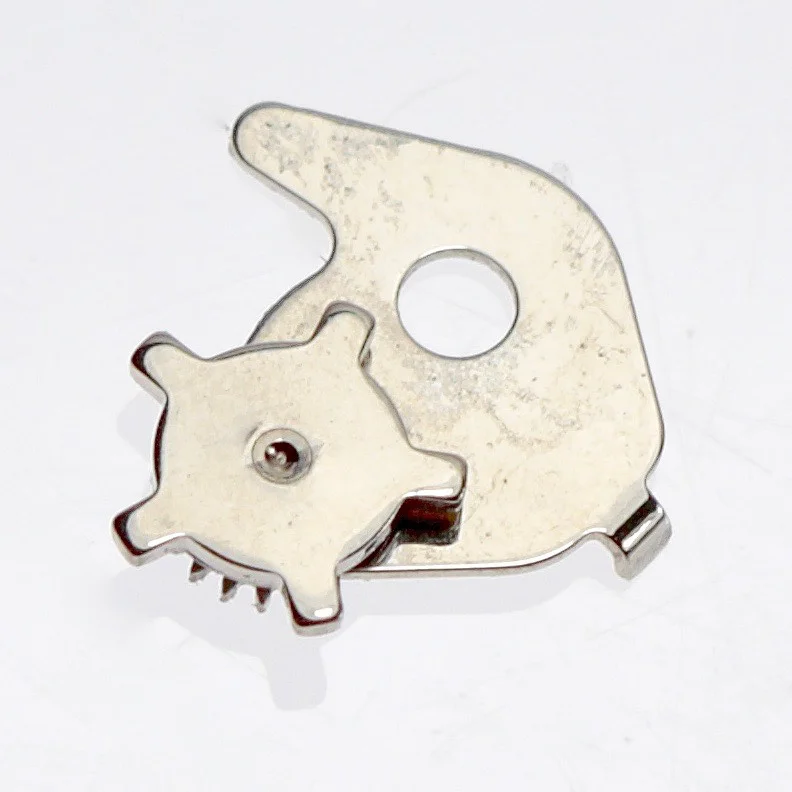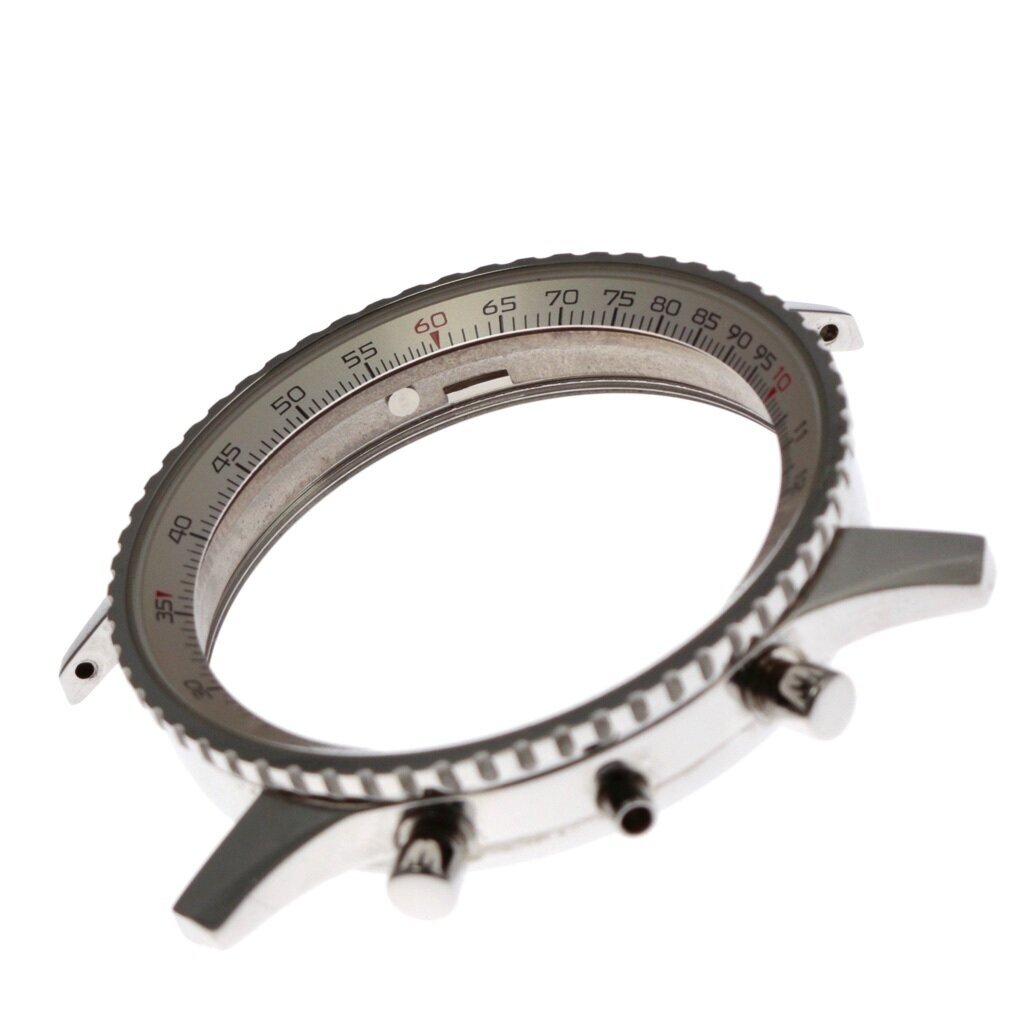The Reason
The Navitimer, the iconic Breitling model (circa 2000)
To understand how the slide rule inner bezel works click here to view an article by Marc Carson.
The screwed on case back recto-verso, screwed in place using a key with 15 facets
The Valjoux 7750 mvt viewed once the case back removed.
The rotor mass removed.
The tungsten rimmed rotor mass, with ball race held in place by the 4 key-way disc.
The movement removed from the case.
The hands removed.
Recto-verso of the removed dial.
Minute, hour and chronograph hands.
The movement removed from the case.
The calendar mechanism hidden under the dial.
To the right of the image is the chronograph mechanism, all steel parts are hardened steel and electro-polished
To the left is the balance assembly, the minute recorder wheel in the centre and the hammers to the right.
The movement with the upper chronograph bridge removed, the bridge also holds in place part of the automatic mechanism.
The triple layered cam system replacing the conventional pillar wheel.
Profile of the cam in place indexed by the spring in the foreground.
Centre, chronograph wheel being driven by the small pinion to its left.
The upper bridge removed, showing the hammers about to push onto the heart shaped cams to return the chronograph hands to zero.
The thin wire spring hooks around the eccentric screw and pushes on the lever upon which the driving pinion for the chronograph wheel pivots.
The balance break meshes with the sliding pinion.
The main train bridge which supports all of the upper chronograph mechanism.
Chronograph bridges.
Levers and springs from the chronograph.
The case with the dial and calibre removed. The inner assembly can be viewed and the inner surfaces of the pushers.
The movement ring sitting between the calibre and the inner case.
To learn more about Breitling



